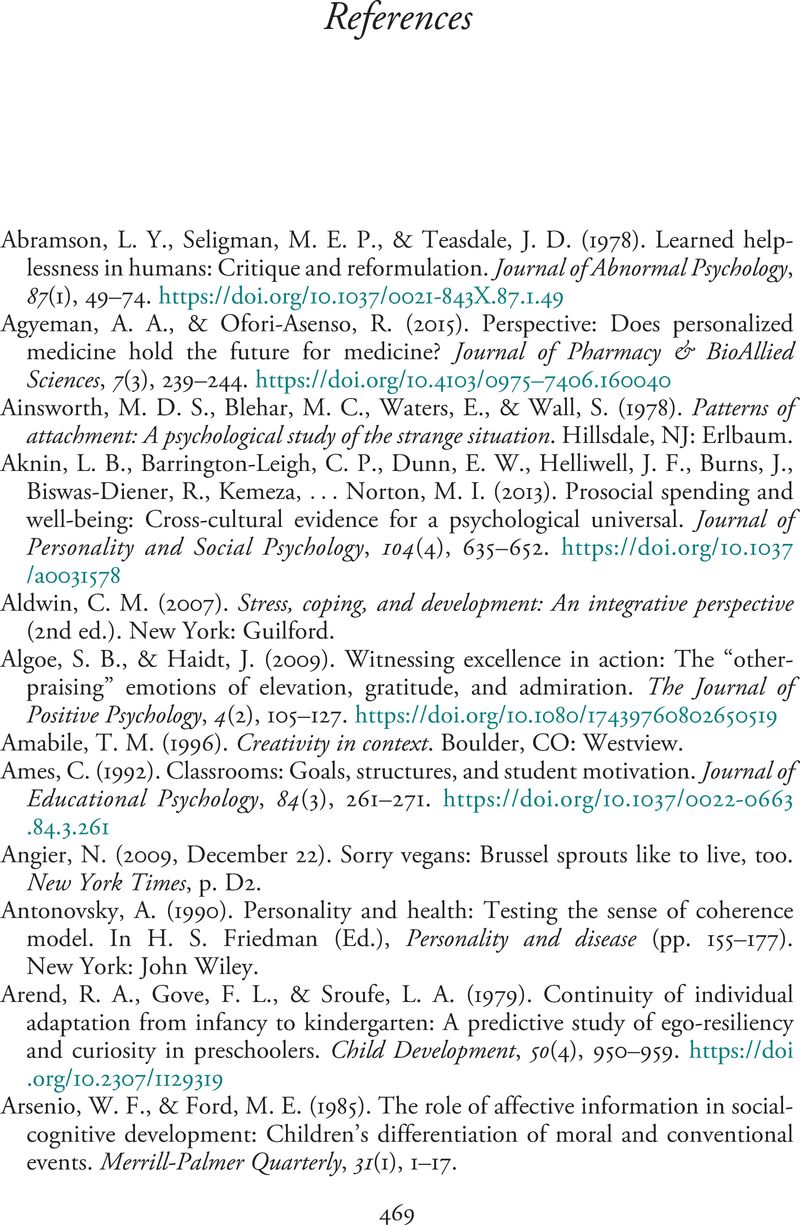 Motivating Self and Others
Motivating Self and Others Book contents
- Motivating Self and Others
- Motivating Self and Others
- Copyright page
- Dedication
- Contents
- Figures
- Tables
- Preface
- Chapter 1 Motivation and Optimal Functioning
- Chapter 2 Self-Direction
- Chapter 3 Core Personal Goals
- Chapter 4 Motivational Systems Theory
- Chapter 5 Thriving with Social Purpose
- Chapter 6 Evolutionary Origins of Social Purpose
- Chapter 7 Life Meaning
- Chapter 8 Guiding Principles for Motivating Self and Others
- Chapter 9 Your Toolbox for Motivating Self and Others
- References
- Index
- References
References
Published online by Cambridge University Press: 12 October 2020
- Motivating Self and Others
- Motivating Self and Others
- Copyright page
- Dedication
- Contents
- Figures
- Tables
- Preface
- Chapter 1 Motivation and Optimal Functioning
- Chapter 2 Self-Direction
- Chapter 3 Core Personal Goals
- Chapter 4 Motivational Systems Theory
- Chapter 5 Thriving with Social Purpose
- Chapter 6 Evolutionary Origins of Social Purpose
- Chapter 7 Life Meaning
- Chapter 8 Guiding Principles for Motivating Self and Others
- Chapter 9 Your Toolbox for Motivating Self and Others
- References
- Index
- References
Summary

- Type
- Chapter
- Information
- Motivating Self and OthersThriving with Social Purpose, Life Meaning, and the Pursuit of Core Personal Goals, pp. 469 - 508Publisher: Cambridge University PressPrint publication year: 2020
